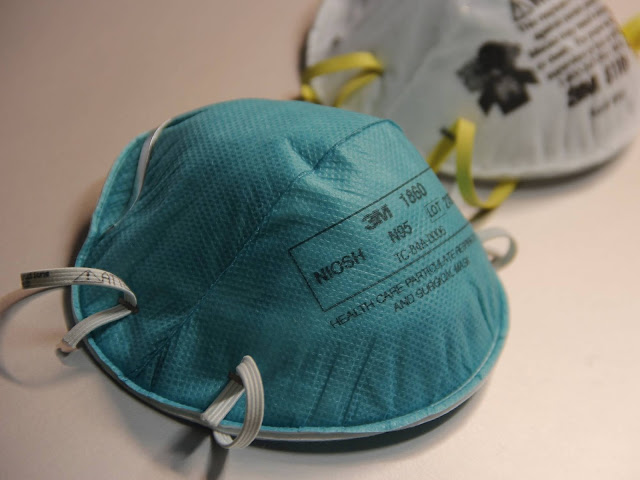With the Omicron variant, N95 or equivalent masks are needed to stop infection, according to epidemiologists

Centers for Disease Control and Prevention photo shows a green N95 mask.
—–
“The fibers in a cloth mask are just not dense enough to filter out a large number of particles in the air that may contain Covid-19,” Guiterrez reports. “Then there are surgical masks, which are good at protecting people against infection but not in the way you might think. They protect others if you’re infected because they block your exhaled aerosols from traveling as far as they would without a mask in the way—they don’t protect the wearer as much. . . . The gaps between a surgical mask and your skin make them unsuitable for the level of infectiousness researchers have seen with the Omicron variant.”
N95s have three layers of polypropylene, and the middle layer has an electrostatic charge that allows it to filter out 95 percent of particles, giving the mask its name. “While N95s are widely considered the golden standard for particle filtration, there are other masks that do an equally good job, such as the KF94, FPP1, FPP2, and FPP3,” Guiterrez reports. “The only difference among them is their country of origin. N95s are manufactured under a strict U.S. protocol that is regulated and certified by the National Institute of Occupational Safety and Health.”
The KF94 mask is South Korea’s version of the N95, while FPP masks are the standard in the European Union. “These types are also subject to careful government oversight and perform with similar efficacy to N95s,” Guiterrez notes. They will provide equal protection against Covid-19.”
The CDC website offers guidance for identifying fakes, and has an online search platform where you can see if a brand/model has been certified by NIOSH. Appendix A of a Food and Drug Administration list also shows brands and products approved for emergency use.
However, the masks can be rotated. Peter Tsai, the inventor of the material used to make N95s, suggested in a study back in May 2020 that people use four masks — wearing one while the others undergo decontamination in separate paper bags at room temperature for three days, “enough time for any traces of the virus on the mask to die out,” Guiterrez writes.
Getting rid of the virus “doesn’t mean the mask is clean,” Guiterrez cautions. “There are countless pathogens living in our mouths and airways—not to mention bits of decomposing food—and these also get stuck in our masks every time we breathe out, eat, or talk. . . . If you’re not bothered by weeks-old bacteria living in your mask, or think this is a small price to pay to keep plastic out of the landfill, rotating your N95s is a reasonably safe way to protect yourself and others against Covid-19.”